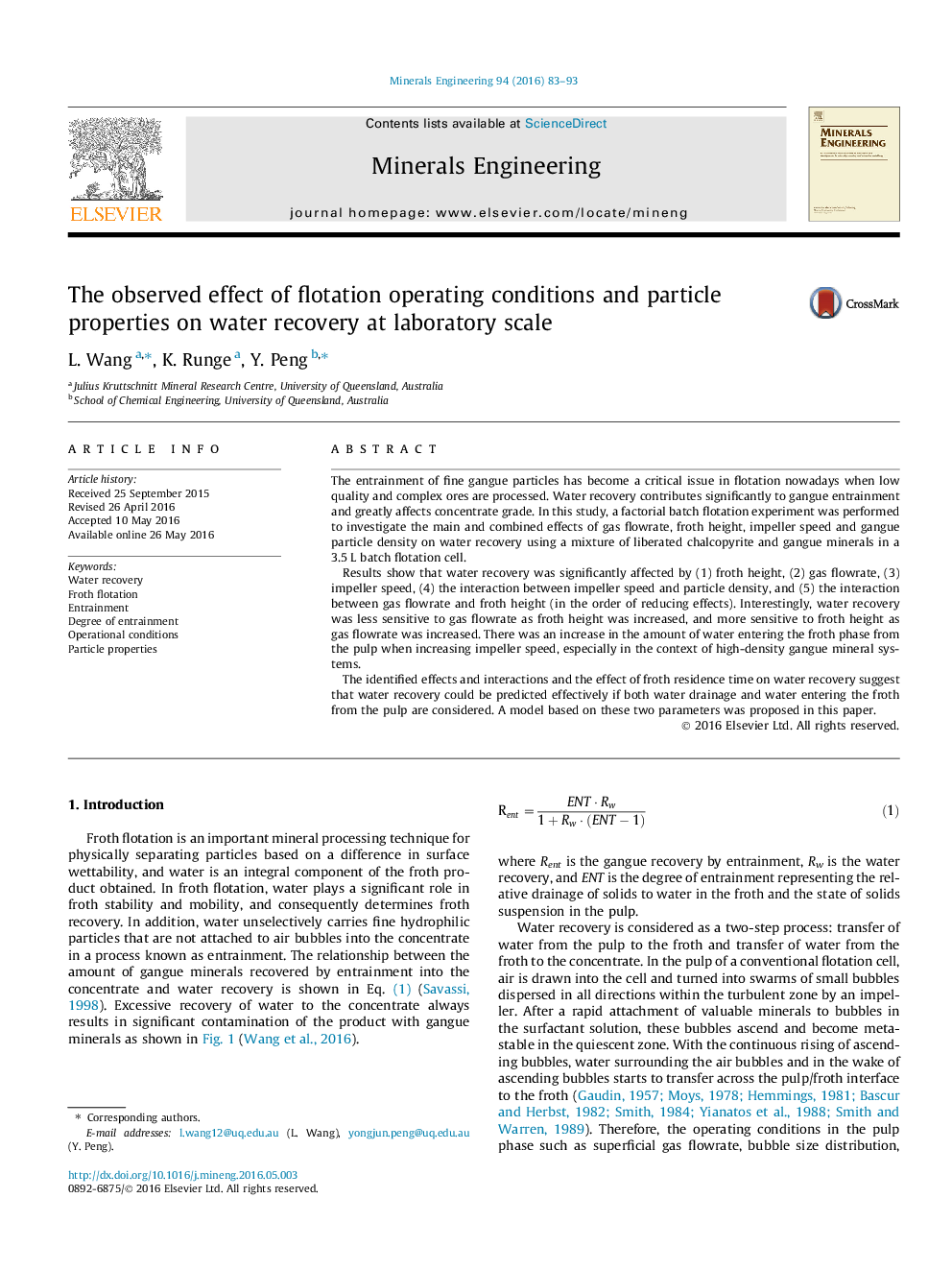| Article ID | Journal | Published Year | Pages | File Type |
|---|---|---|---|---|
| 232735 | Minerals Engineering | 2016 | 11 Pages |
•Confirmed water recovery in flotation is a strong function of froth residence time.•Showed water recovery is affected by variables that change water flow into a froth.•Proposed a new empirical water recovery model incorporating two primary mechanisms.
The entrainment of fine gangue particles has become a critical issue in flotation nowadays when low quality and complex ores are processed. Water recovery contributes significantly to gangue entrainment and greatly affects concentrate grade. In this study, a factorial batch flotation experiment was performed to investigate the main and combined effects of gas flowrate, froth height, impeller speed and gangue particle density on water recovery using a mixture of liberated chalcopyrite and gangue minerals in a 3.5 L batch flotation cell.Results show that water recovery was significantly affected by (1) froth height, (2) gas flowrate, (3) impeller speed, (4) the interaction between impeller speed and particle density, and (5) the interaction between gas flowrate and froth height (in the order of reducing effects). Interestingly, water recovery was less sensitive to gas flowrate as froth height was increased, and more sensitive to froth height as gas flowrate was increased. There was an increase in the amount of water entering the froth phase from the pulp when increasing impeller speed, especially in the context of high-density gangue mineral systems.The identified effects and interactions and the effect of froth residence time on water recovery suggest that water recovery could be predicted effectively if both water drainage and water entering the froth from the pulp are considered. A model based on these two parameters was proposed in this paper.
